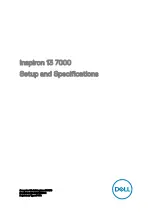
Embedian, Inc.
38
2.1.7.2
USB[0:3]_EN_OC#
Discussion
The
Module
USB[0:3]_EN_OC#
pins
are
multi
‐
function
Module
pins,
with
a
10k
pull
‐
up
to
a
3.3V
rail
on
the
Module,
an
OD
driver
on
the
Module,
and,
if
the
OC#
(over
‐
current)
monitoring
function
is
implemented
on
the
Carrier,
an
OD
driver
on
the
Carrier.
The
use
is
as
follows:
1) On
the
Carrier
board,
for
external
plug
‐
in
USB
peripherals
(
USB
memory
sticks,
cameras,
keyboards,
mice,
etc.)
USB
power
distribution
is
typically
handled
by
USB
power
switches
such
as
the
Texas
Instruments
TPS2052B
or
the
Micrel
MIC2026
‐
1
or
similar
devices.
The
Carrier
implementation
is
more
straightforward
if
the
Carrier
USB
power
switches
have
active
‐
high
power
enables
and
active
low
open
drain
OC#
outputs
(as
the
TI
and
Micrel
devices
referenced
do).
The
USB
power
switch
Enable
and
OC#
pins
for
a
given
USB
channel
are
tied
together
on
the
Carrier.
The
USB
power
switch
enable
pin
must
function
with
a
low
input
current.
The
TI
and
Micrel
devices
referenced
above
require
1
microampere
or
less,
at
a
3.3V
enable
voltage
level.
2) The
Module
drives
USB[0:3]_EN_OC#
low
to
disable
the
power
delivery
to
the
USBx
device.
3) The
Module
floats
USB[0:3]_EN_OC#
to
enable
power
delivery.
The
line
is
pulled
to
3.3V
by
the
Module
pull
‐
up,
enabling
the
Carrier
board
USB
power
switch.
4) If
there
is
a
USB
over
‐
current
condition,
the
Carrier
board
USB
power
switch
drives
the
USB[0:3]_EN_OC#
line
low.
This
removes
the
over
‐
current
condition
(by
disabling
the
USB
switch
enable
input),
and
allows
Module
software
to
detect
the
over
‐
current
condition.
5) The
Module
software
should
look
for
a
falling
edge
interrupt
on
USB[0:3]_EN_OC#
,
while
the
port
is
enabled,
to
detect
the
OC#
condition.
The
OC#
condition
will
not
last
long,
as
the
USB
power
switch
is
disabled
when
the
switch
IC
detects
the
OC#
condition.
6) If
the
USB
power
to
the
port
is
disabled
(
USB[0:3]_EN_OC#
is
driven
low
by
the
Module)
then
the
Module
software
is
aware
that
the
port
is
disabled,
and
the
low
input
value
on
the
port
does
not
indicate
an
over
‐
current
condition
(because
the
port
power
is
disabled).
Carrier
Board
USB
peripherals
that
are
not
removable
often
do
not
make
use
of
USB
power
switches
with
current
limiting
and
over
‐
current
detection.
It
is
usually
deemed
un
‐
necessary
for
non
‐
removable
devices.
In
these
cases,
the
SMARC-iMX8MM Computer on Module User’s Manual
v. 1.2

































